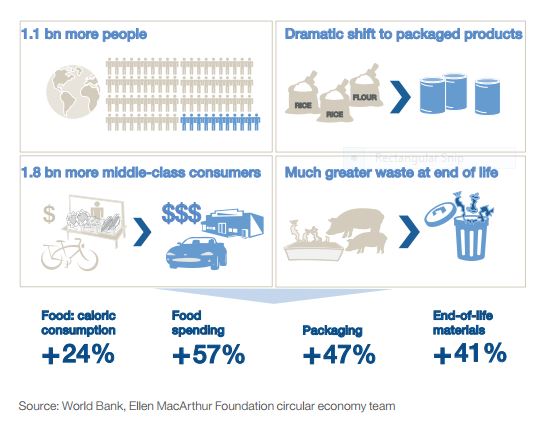Unlocking the Circular Economy Potential to build a Wealth of Flows

By the year 2030, the global population is forecast to reach 9 billion people including an addition of 3 billion new middle class consumers. The future marketplace is seen to be characterized by an unprecedented demand for goods and services produced from a finite supply of resources. The key question here is how do we evolve from our linear 19th century ‘take-make and dispose’ model to an economic model designed for 21st century reality?
Circular Economy as an alternative to linear consumption-production model
For over the last 150 years, the world economy at large has been dominated by a one-way model of production and consumption in which goods are produced from raw materials, sold, used and then discarded or incinerated as waste. This linear model is finite by its nature and will sooner or later fail to respond to the needs of the growing economy. Against this backdrop, the circular economy comes as a potential alternative to the traditional linear model envisioning to build industrial systems which are restorative and regenerative by intent and design.
Why it is the opportune time to embrace circular economy model?
The linear consumption model is already reaching its limits. As per the World Economic Forum, the global commodity prices has overall risen by almost 150% during the period 2002 to 2010. Key industry elements such as gold, silver, indium, tungsten may be depleted in the next five to fifty years.
A circular economy not only presents the key to effective and optimal utilization of the constrained resource base through its restoration and regeneration principles. But also, the models presents an immense opportunity of unlocking a net economic benefit of $25 trillion by year 2050 of otherwise lost revenue.

How circular economy is a key driver in the 4th industrial revolution?
The World Economic Forum recently hosted The Circulars Economy Awards 2016 to recognize the innovation and landmark achievements in this spectrum. The event sets to inspire the small and large industry houses of how they can bring in the next industrial revolution by following the principles of circular economy.
Led by the efforts of World Economic Forum, Ellen MacArthur Foundation and its Global Partners, the circular supply chains are up and running at many industry places in Europe. What is required is a more collective effort to popularize, accept and execute the model of sustainable value creation at a global level.










